Hiroshima will always be in the history books as the first city where an atomic bomb was ever dropped. On 6 August 1945, a US B-29 bomber named Enola Gay dropped the bomb, killing more than 80,000 people instantly. A city trip will therefore be mostly dedicated to this historic event. But there is so much more to discover! Visit the Peace Park, go to the famous Hiroshima Castle and take a day trip to the beautiful island of Miyajima.
Are you planning a visit to Hiroshima? In this travel guide, I will take you to the city’s best sights, discover the best accommodation and learn more about the special culture and history of this port city in western Japan. A history-rich visit to Hiroshima starts here….
This Travel Guide to Hiroshima contains affiliate links. This means that if you make a booking through one of the links on this website, Travel4history gets a small compensation for it. This does not cost you anything extra by the way!
In this Travel Guide to Hiroshima
Useful Websites Hiroshima & Japan
- Accommodation Hiroshima: Agoda, Booking
- Tours & Tickets: GetYourGuide Explore Hiroshima
- Flight Tickets Japan: Jetradar
- Train Tickets: Japan Railway Pass
- Rental Car: Rental Cars

History of Hiroshima – This is what you need to know….
When the rulers built Hiroshima Castle around 1600, they could never have imagined that their city would later go down in the history books as the first city where an atomic bomb exploded. What once began as a small settlement with a few houses under the name Gokumura gradually grew into a large city. For more than 250 years, things remained quiet around Hiroshima, but that changed when Emperor Meiji seized power in 1868. Japan modernized…
Hiroshima as the military center of Japan
Hiroshima began to play an important role in Japan around 1880 when the city government decided to build Ujina Harbor. A railroad was built from the city of Kobe and a line followed from the center of the city to the harbor. Ideal for the use of military transportation, as was the case during the First Sino-Japanese War of 1894. During this war, the Japanese government and the emperor stayed in Hiroshima Castle for a short period of time. And it was also this city where representatives of China and Japan met to reach a compromise. Hiroshima developed as an important military center in Japan.
And the city continued to grow. In 1915, a trade center was established which became known as the Prefectural Industrial Promotion Hall. This is now the symbol of the city: the Atomic Bomb Dome (see photo at top). During World War I (1914-1918), Japan decided to help the Allies defeat the Germans, but during World War II, everything would be different….
A video (4 minutes) that gives an idea of how powerful Little Boy must have been.
Source: BBC Youtube Channel
A catastrophe: How the United States comes to this decision….
Germany and Japan signed a treaty on January 27, 1940, to support each other during a war. When Japan attacked Pearl Harbor on December 7, 1941, it thereby involved the United States in World War II. A long and heavy war followed that was not yet over in Asia when Nazi Germany was defeated in May 1945.
The United States searched for a solution to force Japan to surrender. The idea of using soldiers on the ground led to protest in their own country, as it cost many American lives at the Battle of Okinawa. In fact, there was only one outcome left, and it had just been scientifically developed and ready to be used.
On August 6, 1945, a little after 8 a.m., the American bomber Enola Gay dropped Little Boy over Hiroshima. At 8:15, this nuclear bomb detonated the city. 80,000 people died instantly and except for a few ruins, the city was one big empty plain. But why an atomic bomb on this city? The answer lay in the military nature of Hiroshima, which would hit Japan hard in one fell swoop. And was it necessary? Basically, it was a matter of time before Japan would surrender.
Although many scientists argued that radiation would make it impossible to rebuild Hiroshima, the situation turned out to be completely different. In 1949, the Japanese government declared Hiroshima a City of Peace, and the Atomic Bomb Dome was chosen as the symbol of the city. And the reconstruction? It went extremely well. By the end of the 1950s, Hiroshima was back to how it was before Little Boy exploded. As if nothing had ever happened….

Sightseeing – 5 historical sites in and around Hiroshima
Do you ever plan to visit Hiroshima? Because of Corona, you won’t be able to do so anytime soon. But if you would like to know the city pretty well, make sure you spend at least 2 full days here. Just for the sights around the atomic bomb, you will spend almost a whole day. But there is much more. Below you will find 5 interesting places that are definitely worth a visit during your stay in Hiroshima.
The best travel time to visit Hiroshima is from April to October. In the other months is also possible, only the temperatures will be lower (January around 5 degrees). In the month of April, you have the beautiful cherry blossoms that Japan is so famous for.

1. Genbaku Dome, or the Atomic Bomb Dome: Remnant of the Catastrophe
Hiroshima was one big barren plain after the explosion took place. How miraculous, then, is it that the Hiroshima Prefectural Industrial Promotion Hall partly survived? Unique indeed, but just above this building Little Boy exploded, destroying the surrounding area like an inverted funnel, but not this monument. It was decided that the building should serve as a symbol of the city’s suffering. And the name Atomic Bomb Dome? It was chosen because of the shape of a bomb.
Fact: In 1939, scientist Albert Einstein warned the U.S. government that Germany was working on making an “all-destructive” bomb. US President Roosevelt, therefore, decided to accelerate the Manhattan Project, the development of the atomic bomb. Einstein only advocated threatening the weapon, but not ever actually using it.
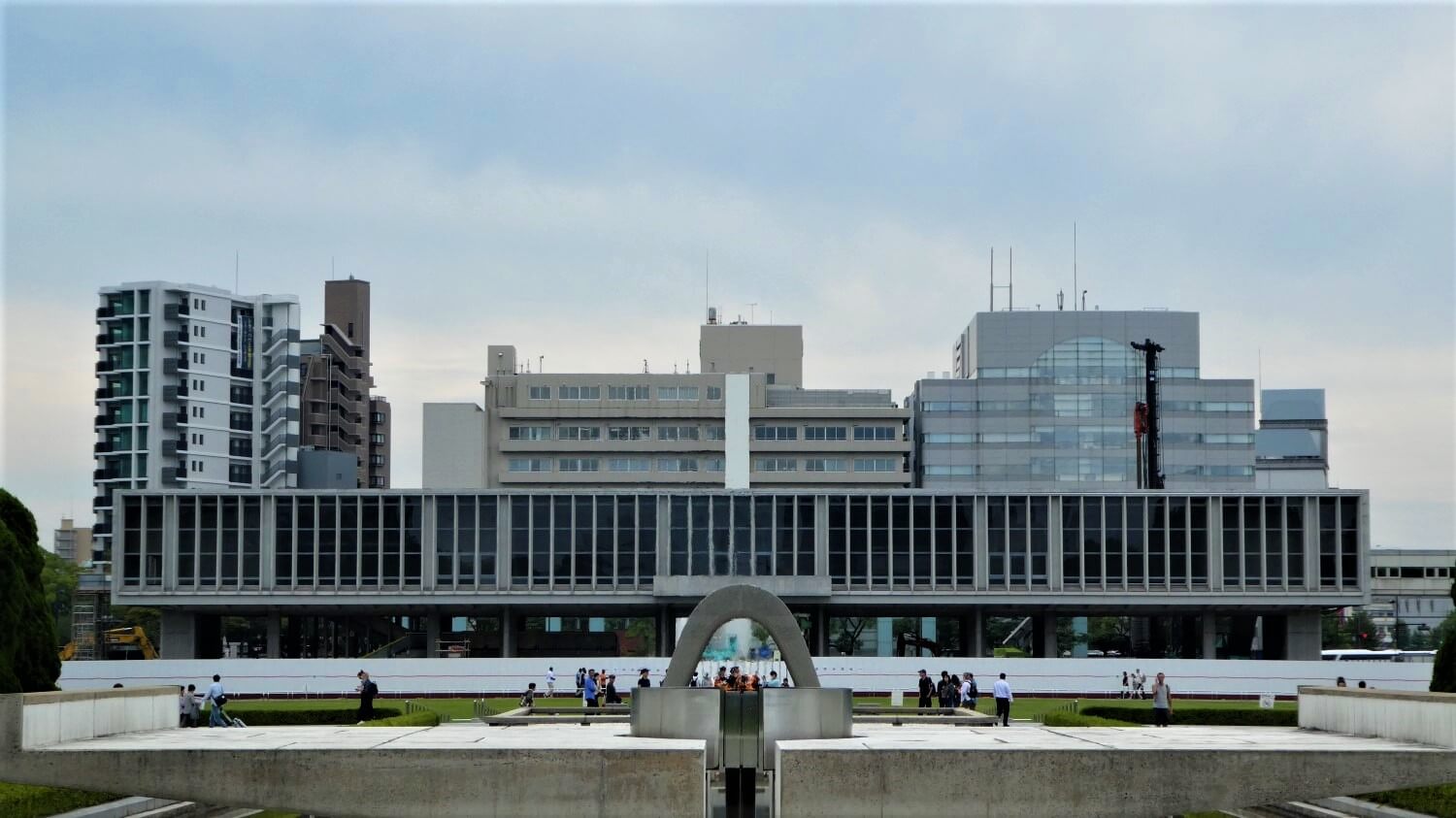
2. Visit the Hiroshima Peace Memorial Museum
The Peace Memorial Museum is among one of the most impressive museums in Japan. It opened its doors in 1955 and tells the whole story of the atomic bomb, as briefly outlined above. In addition, you will find many photographs and a number of striking objects, including a charred tricycle. After visiting the museum you come to the conclusion that such a bomb should never be used again. Whether that is a real option? Let’s hope so. It will not be up to Japan.
Fact: In 1947 the United States determined that Japan’s constitution should include a provision that the country should no longer have its own army. Japan now has a self-defense force, which Article 9 of the Constitution does not officially recognize as an army.

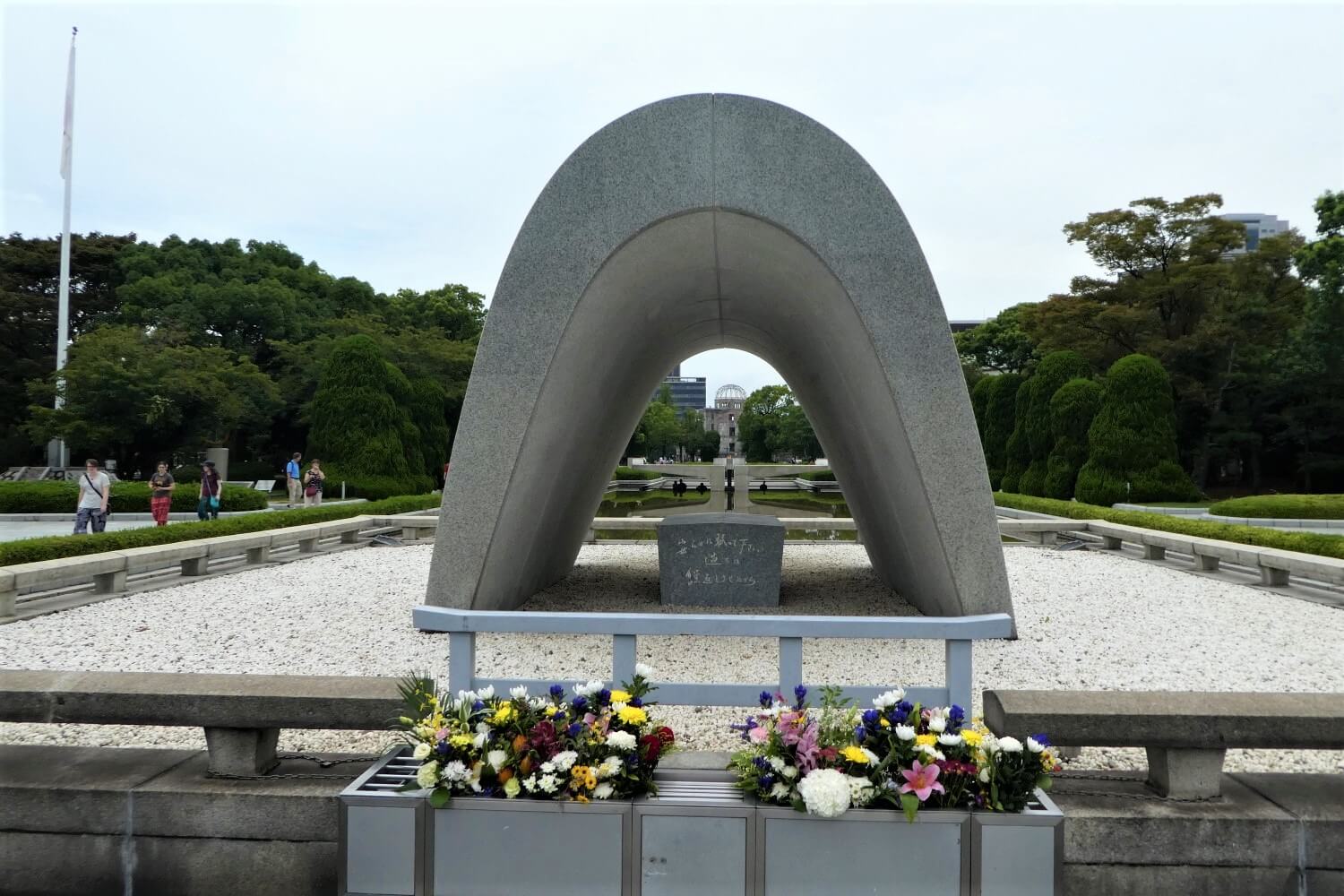
3. Walk through the Peace Memorial Park
The Peace Memorial Park is just as impressive as the previous two attractions. This park includes a Memorial Hall, a memorial to the Korean victims, and a monument of a girl with a crane. This is a reference to Sadako Sasaki, the girl who got leukemia and died at the age of 12, while she still had many dreams. Below is her story…

The story of Sadako Sasaki: 1000 cranes for world peace
Young, athletic, and a bright future lay ahead of her. Sadako Sasaki was 2 years old when she lived 1.5 kilometers from the epicenter and survived the atomic bomb. Until, at the age of 11, she became unwell while running. The doctors diagnosed leukemia.
Anyone who folds 1,000 cranes will have their wish granted, according to a Japanese legend. In the hospital, Sadako set to work. She had the fervent wish to participate in running races again someday. And she prayed for world peace. But alas. Sadako Sasaki died at the age of 12 on October 25, 1955, from leukemia caused by radiation from the atomic bomb.
In 2016, U.S. President Barack Obama, the first statesman of the United States to attend a commemoration in Hiroshima, folded two cranes. These are now also on display at the Peace Memorial Museum.
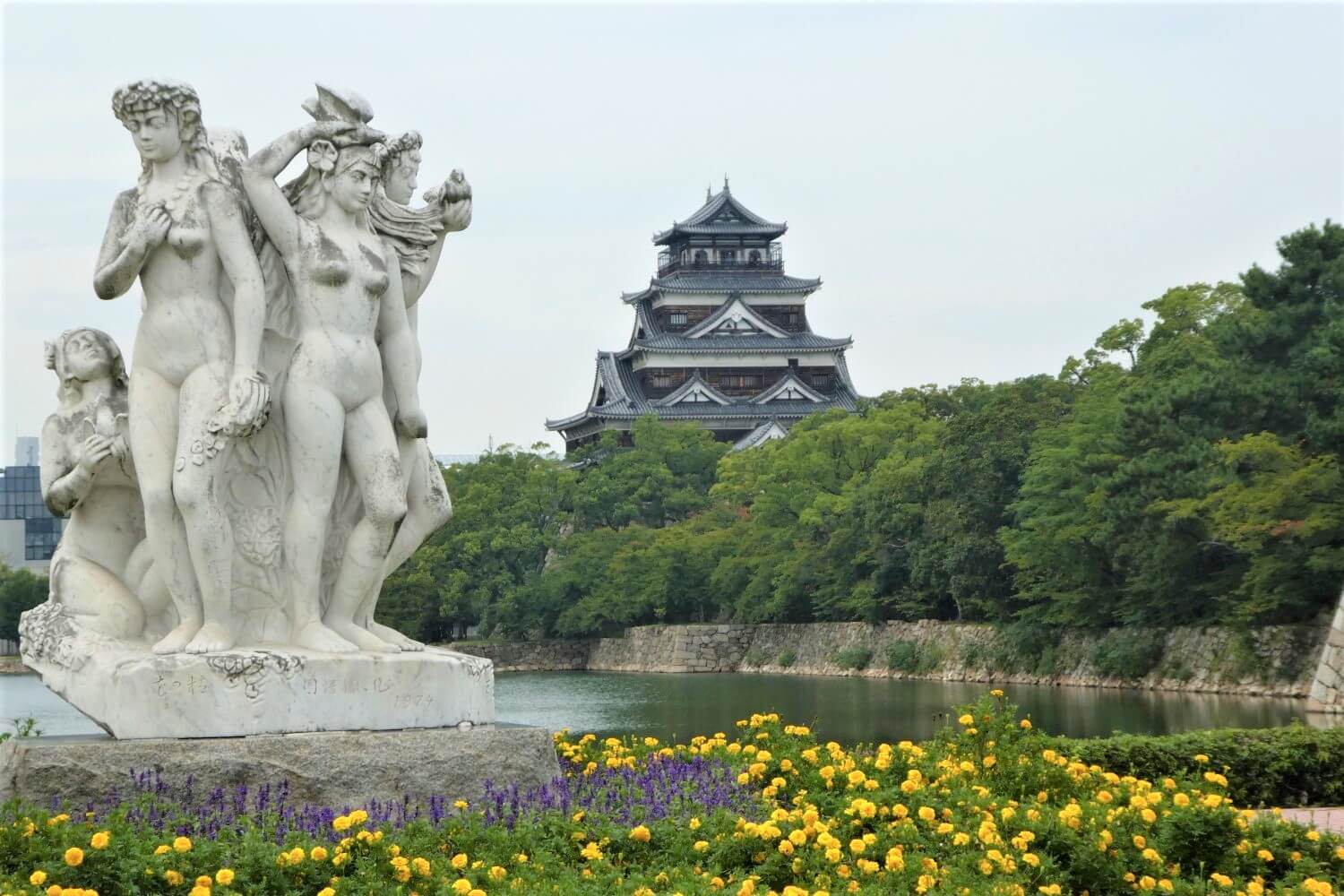
4. Visit the Castle of Hiroshima
North of the Peace Memorial Park you will find the Hiroshima Castle. It is, of course, a replica (1958) of what it looked like before the atomic bomb exploded. Construction of the castle began around 1600 and this was the heart of the city for centuries. During World War II, Japan used it as a military depot. After the reconstruction of the new castle, it became a museum of the city’s history before World War II.

5. Take a day trip to the historic island of Miyajima, also known as Itsukushima
A few miles southwest of Hiroshima is the small island of Miyajima. It was the monk Kobo Daishi who climbed the highest mountain on the island in 806, thereby determining the history of the island. You will find a number of important Buddhist temples here, the Itsukushima shrine being the most famous. The torii standing in the water is among one of the most photogenic objects in Japan. Finally, it was the Japanese scholar Hayashi Gaho (1616-1680) who considered Miyajima one of the three most beautiful places in the country. Plenty of reasons to visit this historic island….
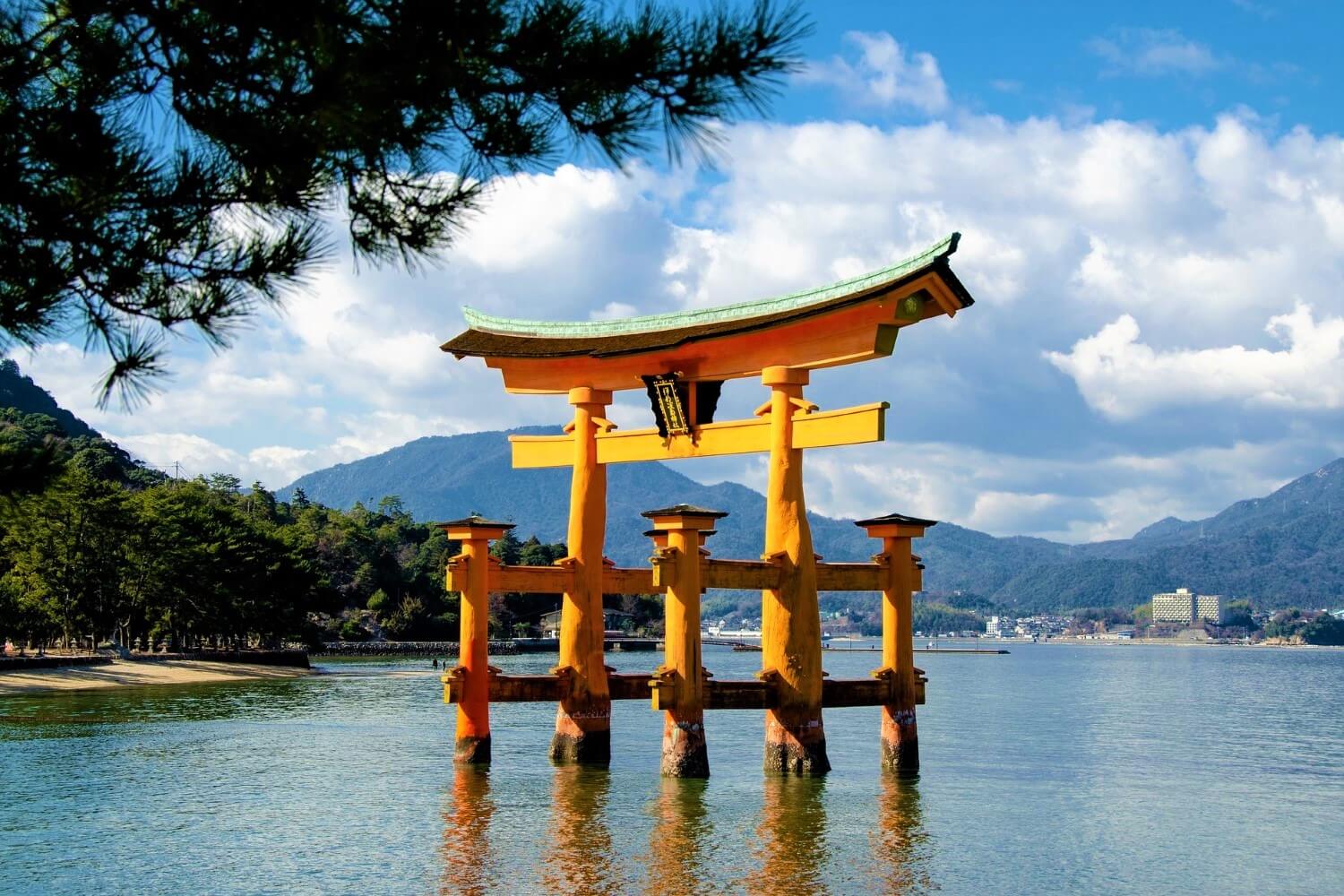
Accommodation – Where to stay in Hiroshima?
Hiroshima is a city of about 1 million people. Compared to Tokyo, it is a fairly quiet city, with tourists interested in the city’s sad history. Generally, most people choose a hotel or hostel in the center between Hiroshima Station and the Peace Memorial Park.
Tip Hostel: Santiago Guesthouse (budget) is within walking distance of the Peace Memorial Park and the Atomic Bomb Dome. Friendly staff, a cozy common living room, good bedrooms, and a roof terrace. A bunk bed is available for 20 euros per person.
Looking for accommodation in Hiroshima? Check here the options.
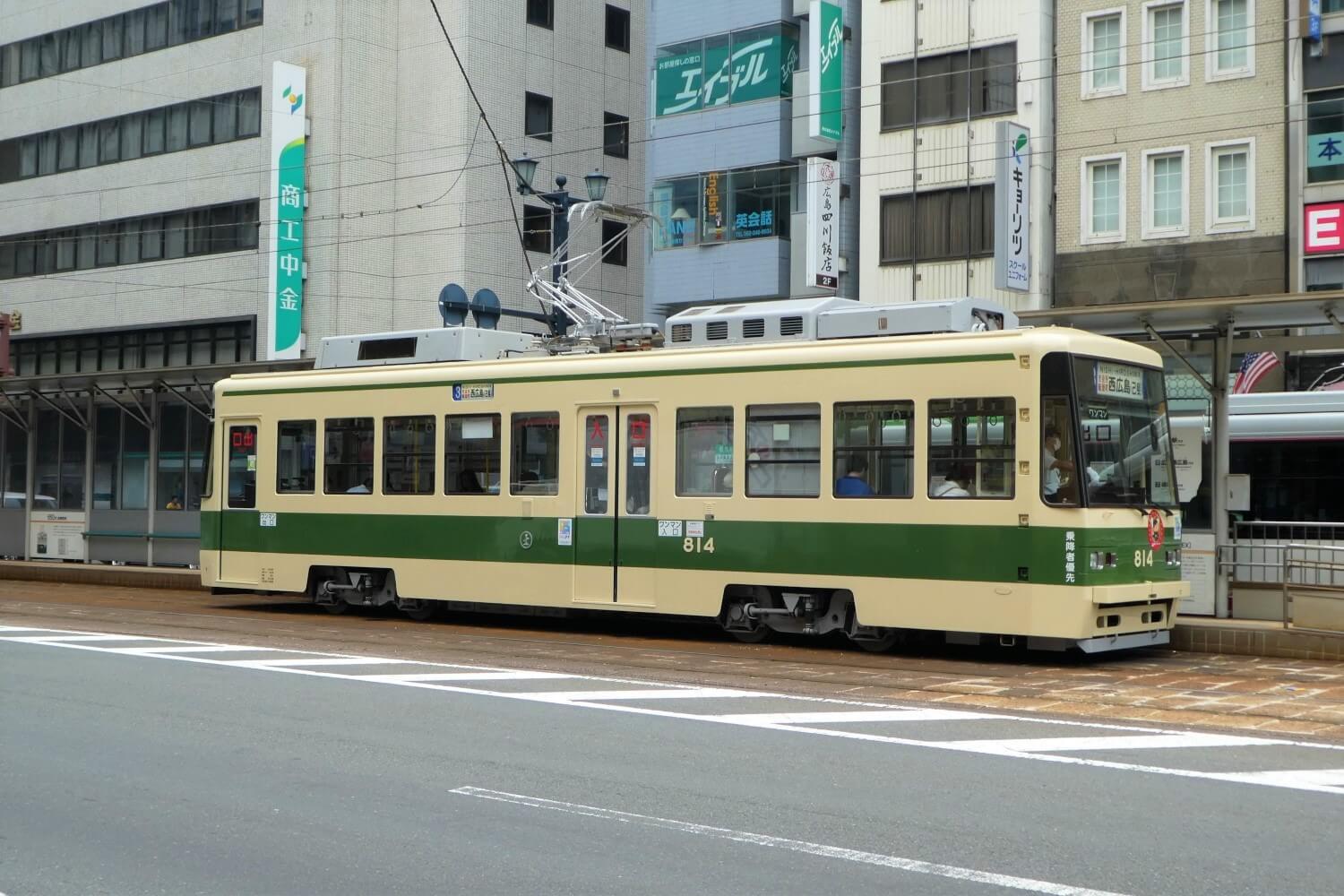
Transportation – How to get to Hiroshima?
Hiroshima has an airport, but it is located 50 kilometers east of the city. Most tourists fly into Tokyo or Kyoto and take the train to this city. The Shinkansen, the high-speed rail line is the best way to reach Hiroshima. The train station is located northeast of the city center.
The Sightseeing Loop bus takes you from the train station easily into the center and to the main attractions. For people with a JR pass, this bus can be used for free.
The Hiroshima Bus Center is the city’s bus station. Here you will find mainly the long-distance buses to all corners of Japan. This bus station is located 200 meters east of the Atomic Bomb Dome.
Maybe also interesting?
- Himeji | Discover the most beautiful castle in Japan
- Huis ten Bosch, Nagasaki | A Dutch theme park in Japan
- Fukuoka | Historical travel guide of a hip city
Do you have any tips, comments, or ideas about this Travel Guide of Hiroshima, Japan? Feel free to leave a comment below!